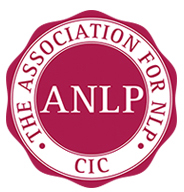Neurolinguistic Programming or Natural Language Processing
NLP in my Practice
I have trained in NLP to help my patients further/on a different level and have found that combining therapies such as homeopathy and NLP seems to have great results. This way I can work with the physical pathology, addiction etc with the homeopathic medicine internally, but whilst that is working I can use NLP techniques to help the patient make the shift on a psychological level. This has been really helpful to many patients. NLP is great to help people change the way they view things that happen to them in their life, that can cause stress and long term make them sick. Anxiety, nervous tension, lack of confidence for performing or in business situations, can all be improved and in most cases eradicated by good therapy with NLP.
Often in my homeopathic practice I have worked with patients to help them change their perception of situations that occur in their lives through discussion and guidance, however this takes time and work, also the need for the patient to be totally connected and partaking fully of the process. In NLP sessions you can gain very deep results, lasting results and it can be instantaneous. I have had people come into the practice room having suffered from deep traumas in place from years before and they leave having given that up, released it, let go of it and in effect released themselves from the need to have it define them anymore.
What is NLP? a history
The letters stand for Neurolinguistic Programming or Natural Language Processing. There are many different definitions in use; NLP explores the relationship with how we think (neuro) and how we communicate (linguistics) and our patterns of behaviour and emotion (programming).
In the 1970's when Richard Bandler a student of psychology and John Grinder an assistant professor of linguistics met at the University of Santa Cruz, California, USA where Bandler was running a study of a family therapist Virginia Satir. Her use of language and certain speech patterns seemed to accomplish phenomenal results with her clients. This study became the first modeling project used to create NLP. Grinder modified the work and developed a Meta Model.
Fritz Perls a Gestalt therapist and Milton Erickson a hypnotherapist were also modeled. The combination of these 3 models, were developed into a Meta model and a Milton Model which together formed NLP. We all have representational systems that we use to make sense of our thoughts, feelings or in general the data that comes into our world everyday.
- V Visual - sight, what things look like
- A Auditory - hearing, what things sound like
- K Kinesthetic - feeling/sensation, what things feel like
- O Olfactory - of smell, what things smell like
- G Gustatory - of taste, what things taste like
Every individual has a predominant representational system and when working with a client through NLP the best/most successful outcomes will be if you register and understand their own representational system. Some people learn by visualizations, they take in things they see . need to write in coloured pens etc or see pictures. Others find listening to a lecture that is recorded or doing their work with music playing will enable them to learn to the best of their ability. Others find that a kinesthetic system of feeling/sensation helps, i.e. walking around, touching things, using a squeezy stress ball or juggling whilst learning lines. (Kinesthetic is both tactile and emotional feelings.)
Distinguishing between the conscious mind and the unconscious mind can be useful. When we have immediate awareness of something, we refer to it as being a conscious mind activity. When it is somewhat removed from immediate awareness, we refer to it as unconscious mind activity.
The vast majority of our mental processing is at the unconscious level. With the exception of a few rare individuals, the conscious mind has limits. For most of us the limit is somewhere between five and seven streams. We therefore speak of the conscious mind being able to process 7+/-2 information streams at a time.
The unconscious mind, alternatively, tracks millions of bits of data every second like a computer and does so effortlessly. One thing it does is to pass information to or withhold information from the conscious mind. In other words, the conscious mind has access to unconscious mind activity only if the unconscious mind grants it that permission.
One goal of neurolinguistic programming (NLP) is to bring about a full collaboration between the conscious mind and the unconscious mind so that they work together rather than be at war with each other.
